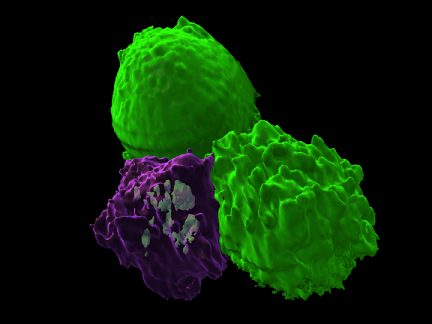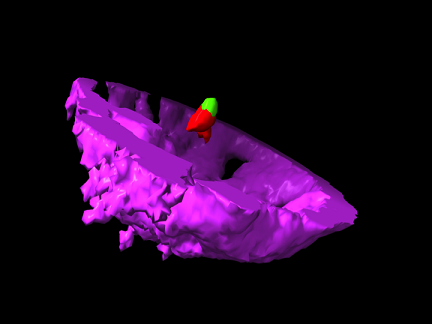Projects
Peripheral programming of migratory dendritic cell antigen hand-off

Our previous work showed that antigen dissemination in the lymph node is controlled, at least in part, by signals emanating from the peripheral tissue. We are using fluorescent antigen tracking mouse models paired with sequencing approaches to determine which dendritic cell signaling pathways are engaged by tissue contexts that promote antigen hand-off compared to contexts that restrict hand-off. Determining the peripheral signal(s) that license migratory dendritic cells to pass antigen will be a key part to controlling downstream antigen availability in the lymph node.
T cell priming by lymph node resident dendritic cells
Recent findings demonstrated that antigen-bearing lymph node resident conventional dendritic cell type 1’s (cDC1) efficiently stimulate the proliferation of tumor antigen specific CD8+ T cells. However, gene expression profiling of the resulting CD8+ T cell population suggested that the T cells were sub-optimal (lower expression of cytotoxicity pathways and IFN pathways) compared to T cells populations primed by migratory cDC1. We are using both in vivo and in vitro approaches to assess the phenotype and functional potential of these sub-optimally primed T cells including investigating how different sources of antigen (self, tumor or bacteria) influence stimulatory vs tolerizing behavior.
Impact of vesicular antigen packaging on antigen propagation in the lymph node

Our previous work showed that myeloid cells hold tumor antigen within membrane-bound intracellular vesicles and that the process of sharing antigen with other cells involves the hand off of the vesicle as a discreet unit of information. We are interested in investigating the role of vesicular packaging in dendritic cell antigen hand-off and antigen presentation in the lymph node. This includes profiling packaging characteristics based on antigen type (self, tumor or bacteria) and interrogating the impact this has on the recipient DC’s function.